Viola langsdorffii (Regel) Fisch.
Description. Illustrations: 5 photographs of Viola langsdorffii and 3 drawings.
The Alaska violet grows in species-rich alpine meadows in mountain ranges of the North American northwest coast, and on the island of Unalaska in the Aleutian chain. It appears to be stemless at flowering, but later produces several tall, well-developed stems. The large blue-purple squarish flowers, 2.5-3.0 cm, are the distinguishing feature of V. langsdorffii. Dark purple stems, petioles, peduncles, sepals and veins on the under side of the leaf are also characteristic.
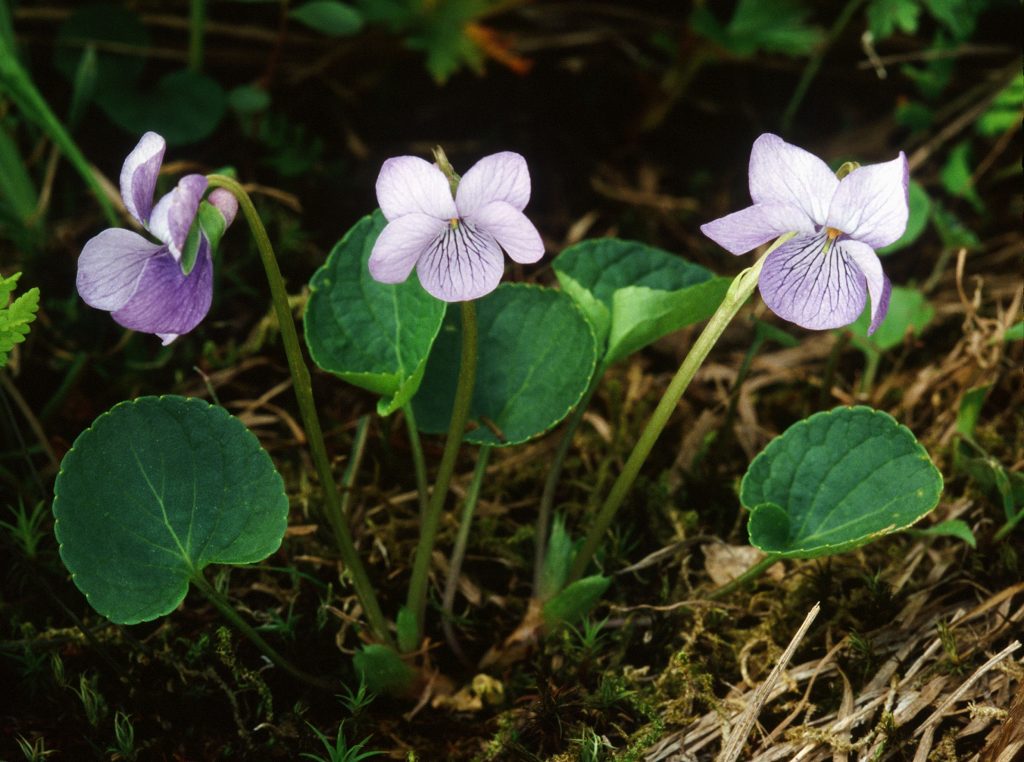
In exposed windy, alpine environments the violets are low to the ground but where plants are growing in more protected situations amongst grasses, meadow plants or under shrubs the plants are often taller. Stems elongate later in the season, up to 35 cm in summer, one to several stems per plant and one basal leaf per emerging stem. The rhizome is thick. Large ovate stipules, to 1.5 cm long, are obvious at the base of each petiole, the stipules with ciliate margins. There is little difference in size between the basal and cauline leaves at flowering time, both are broadly ovate to reniform with an abruptly acute tip and shallow lower lobes while later the basal leaves are broader and cauline leaves narrower. The leaves are dull green, paler green underneath and with long petioles. Both upper and lower leaf surfaces may be glabrous or pubescent. Leaf margins are shallowly crenate, ciliate and decurrent for half the length of the petiole. The heart-shaped stem leaves are truncate at the base and the stipules slightly smaller than those of the basal leaves. Sepals are glabrous, appendages short, wide, and rounded, with hairs on the margin. Peduncles long, axillary and square in section; bracteoles 0.6 cm long, curled around peduncle above the middle.
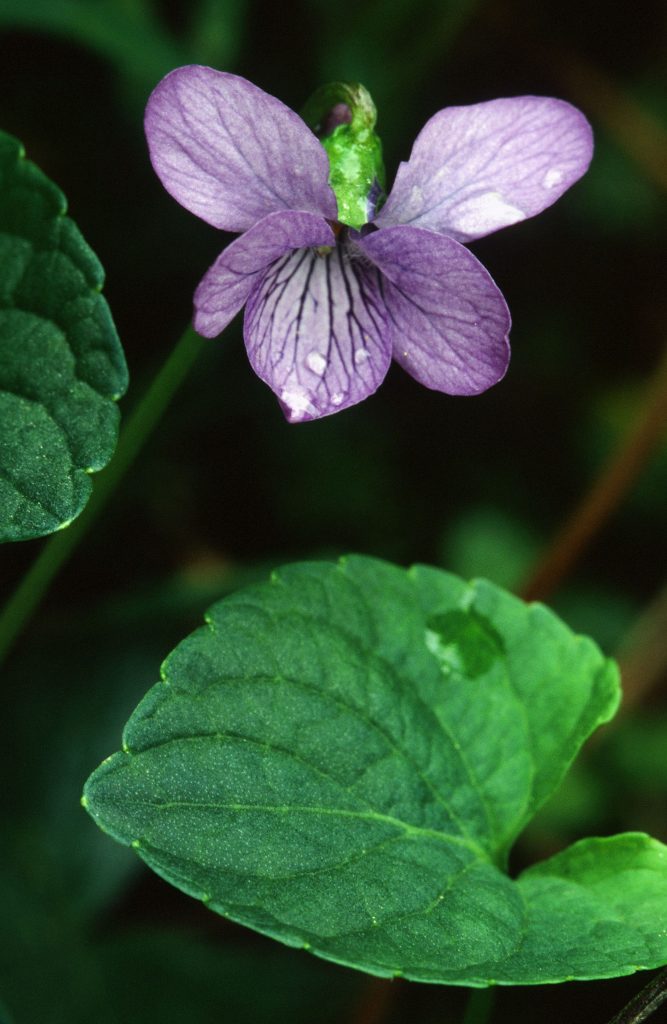
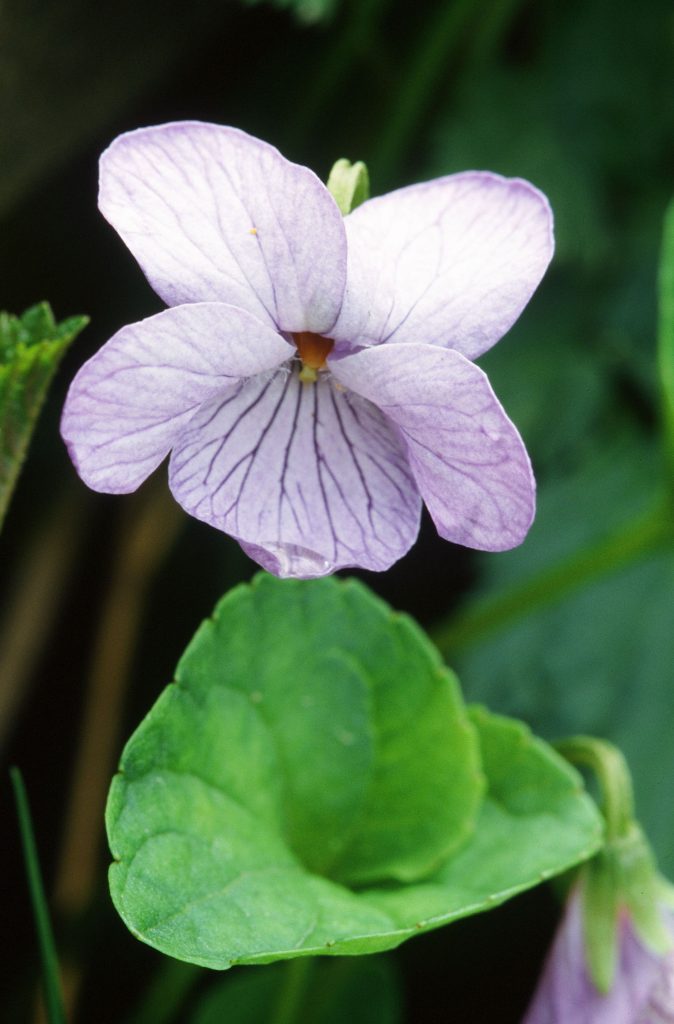
The flowers are held well above the leaves. Petals vary in depth of color from very pale to deep rich purple. There are veins on all petals, with darker purple guidelines extending the length of the keel petal. The reverse of the petals and buds is slightly darker. Deep in the throat of the flower on the lateral and lowest petals are long, fine hairs. The spurred petal is nearly twice as wide as the lateral and upper petals, but shorter and concave, giving the flower a square shape. It has a blunt end with a shallow notch. The spur is purple, 0.3 cm long and wide, rounded at the end and narrow in section. Relative to the size of the flower, the petal spur is not as large as that of V. howellii. The flowers have a strong perfume, the same as that of the Viola odorata group of violets and not shared by any other North American violets but probably inherited from its ancient Viola ancestor (see below). Flowering period is mid-June to July. Open–pollinated spring pods and summer closed pods (cleistogenes) are on erect peduncles; pods green, glabrous and triangular in section, 1.7 cm long. Seeds are large and black, 2.3-2.5 x 1.4-1.5 mm; cotyledons large, long and narrow.

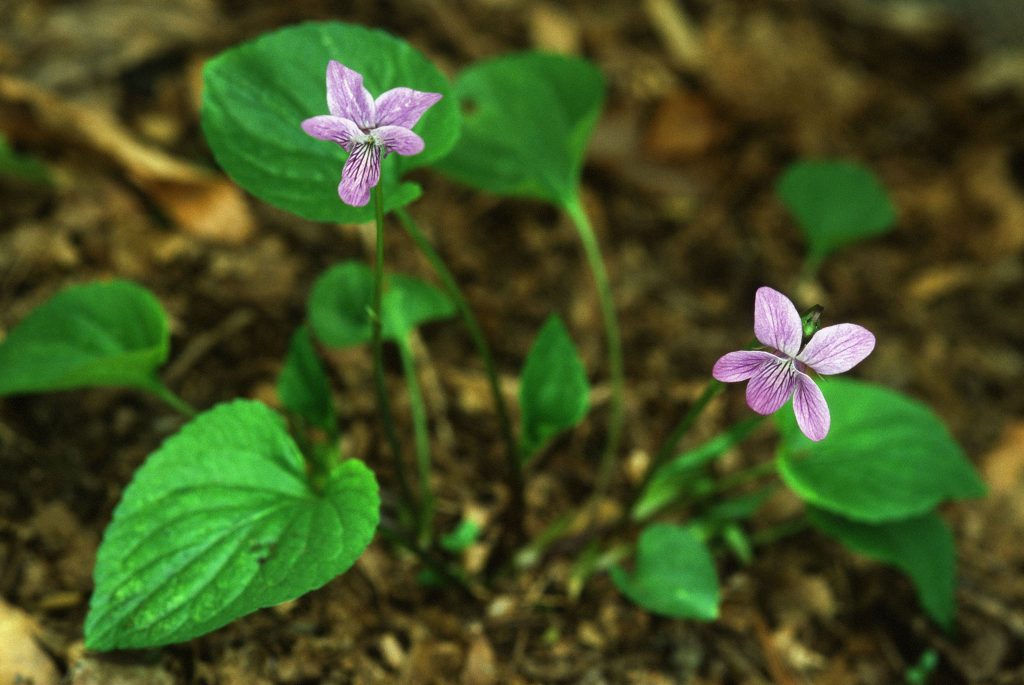
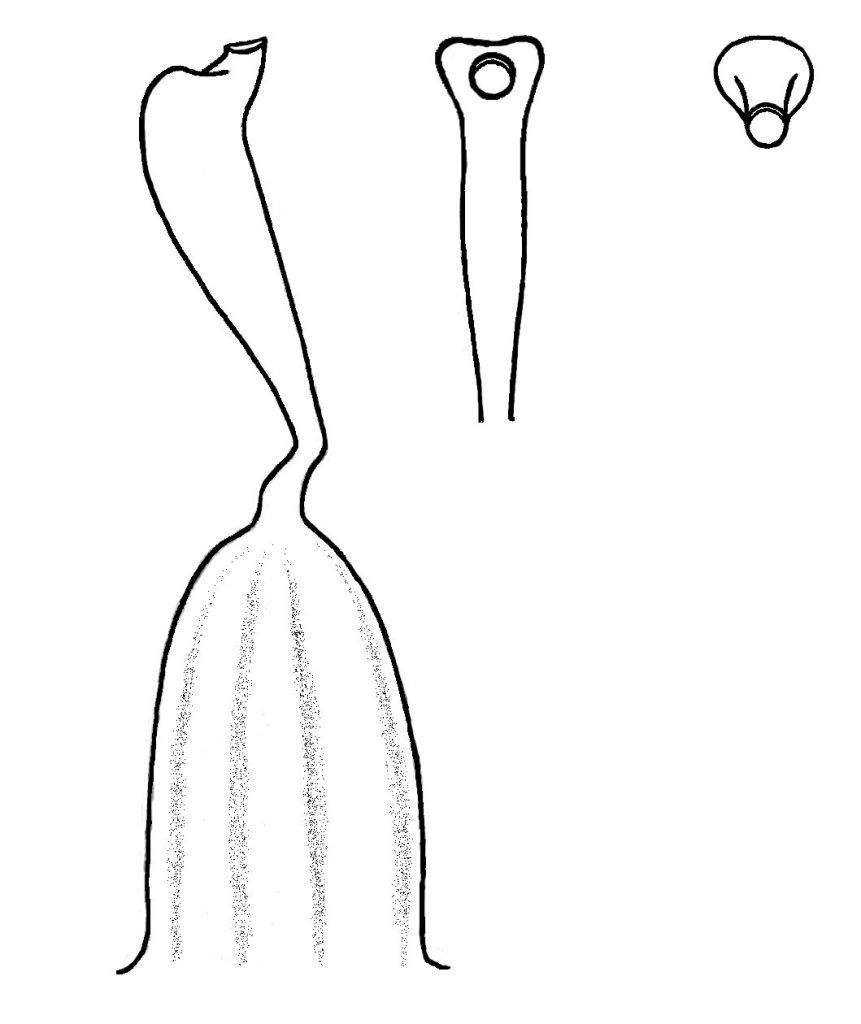
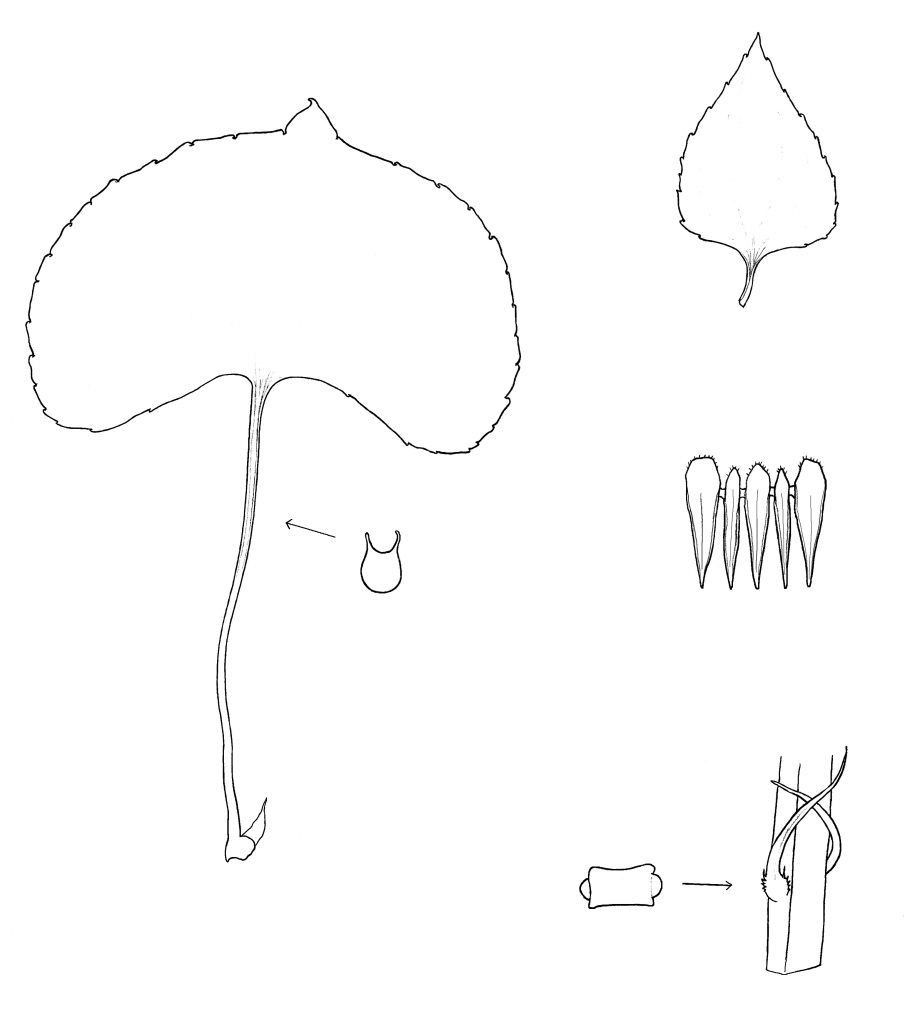
V. langsdorffii grows in acid soils, usually in very open areas, near peat bogs or in alpine meadows. In the Aleutian Islands the mean daily temperature in July is 10°C. to 13° C. in southern Alaska, while the extreme lows for these two regions are –17° C. and –22° C. to –35° C. There are only about 20 sunny days during the summer, and the rainfall is high. The Aleutian Islands should be regarded as a separate floral region. Of volcanic origin, they are now forestless, all over is open meadow covered in moss. Many artic-montane circumpolar plants occur in both the eastern and the western parts of the island chain but in the central southern part pacific coastal plants predominate.
In its distribution, V. langsdorffii is commonest on Unalaska Island from whence it was first collected. It ranges from southwestern Oregon, maybe northern California, through Washington State, British Columbia, southwest Yukon Territory and Alaska on coastal ranges and thence through the Aleutian Islands, to Kamchatka, Sakhalin and the alpine zones of northern Japan. It is rare south of the Canadian border. It can be seen on Mt. Roberts above Juneau growing in soils derived from green schist slate and in meadows at lower elevations. It is also on the high mountain passes between Whitehorse (Yukon) and Skagway (Alaska).

Taxonomy, Nomenclature and Ploidy/chromosome counts
Section Langsdorffianae (Marcussen, 2011).
Viola langsdorffii (Regel) Fischer, DC. Prodr.1:296, 1824.
(syn. Viola mirabilis var. Langsdorffii Regel, Bull. Soc. Imp. Moscow 34: 472, 4. 1861; V. simulata Baker, Madrõno 3, 237. 1936; Viola superba M.S. Baker, from Oregon. 1940). The type specimen, in Leningrad (St. Petersburg), was collected on Unalaska Island in the Aleutian chain, by Adalbert Ludwig von Chamisso, 1815.
Published chromosome numbers for the Langsdorffianae of 2n=64, 96, 102 and 120 represent a few species or maybe races, all high polyploids. V. kamschadalorum (2n=96), V. langsdorffii (2n=c. 102) and V. ursina (2n= c. 64) have been recognized as species. The count 2n=96 corresponds exactly to the 16-ploid level (i.e. 16×6), the 18-ploid level 2n=102 deviates only slightly from the expected 2n=104 (18×6). In Viola it is quite common for polyploids to drop duplicated chromosomes. Deviating counts for V. langsdorffii of 2n=c. 96 and 2n=c. 120 possibly reflect the great difficulty in counting many small chromosomes, and perhaps the wish to accommodate these counts to multiples of x=12, the base number attributed to Langsdorffianae by early authors. The 20-ploid chromosome number of 2n=ca. 120 obtained for material from the Queen Charlotte Islands (Taylor and Mulligan, 1968) may indicate that the eastern Pacific population of V. langsdorffii differs from the western Pacific population. (Marcussen et al, 2011).
Polyploidy plays a crucial role in creating diversity in plants. Viola langsdorffii possesses genomes derived from the hybridization of the North American members of three diverse lower-ploid Viola lineages to a 10-ploid level 12-14 million years ago. The three ancestors were from the sections Chamaemelanium (2n=2x=12) (yellow flowered), Plagiostigma (2n=4x=24) (white flowered) and Viola (2n=4x=20) (blue flowered). Although the resulting 10-ploid species should have 2n=56 (12+24+20), one chromosome pair has been dropped, leaving the 10-ploid level of 2n=54. Two additional hybridizations within the last 5 million years with species of section Plagiostigma (each 2n=4x=24) resulted in the 18-ploid (18x) V. langsdorffii (2n=54+24+24=102).